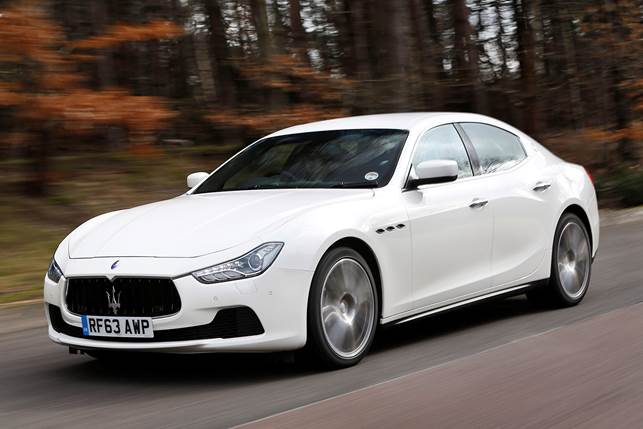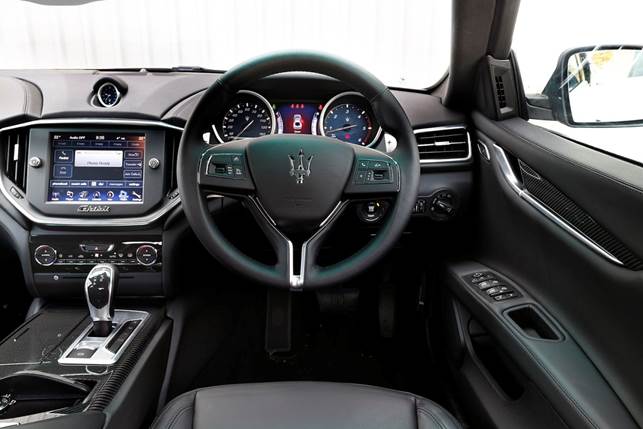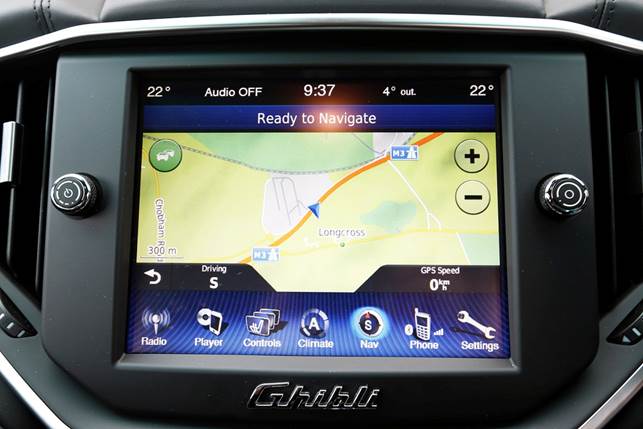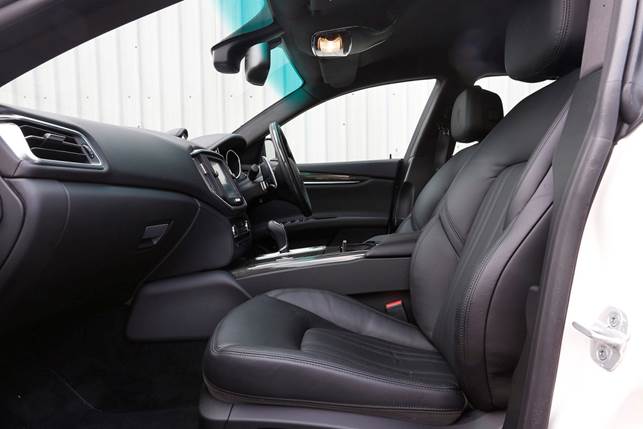For top end sedan debuts, 2014 is the
year of the Maserati. That’s because the company is in expansion mode. We jet
to the gold coast to greet Ghibli, tasked with amassing conquest sales
In the same week that FCA (Fiat Chrysler
Auto) was incorporated as a new Anglo- Dutch entity and in the same year that
Maserati turns 100, the company launched what will likely become its
best-selling sedan, the Ghibli. It’s an important vehicle for another reason,
as it forms the basis for a 4WD luxury SUV, Levante, that should be gold for
Maserati. The firm also promises a new model annually for the next five years,
by which time global sales should have risen from 6,300 in 2012 to 75,000 units
annually. It’s ambitious stuff but then FCA boss, Sergio Marchionne, is known
for his grand plans.

The
Maserati Ghibli S is a visual standout from every angle, inside and out
Ghibli badge returns
Meantime, we get to grips with new Ghibli,
a car that aims to steal sales from E-Class, 5 Series, and A6. Unlike
Quattroporte, where many sales are to former owners, Ghibli is brand spankers
so all deals will be conquests from other brands. To that end, Ghibli aims to
be different, attracting customers who desire a more emotional attachment to a
vehicle, where style and sonics, speed and sportiness are more important than
economy, ergonomics, entry and egress.
While the car is new, the name is familiar,
for this is the third time the badge, which references a hot dry wind out of
the Sahara, has been used by Maserati. Pronounced ‘Giblee’, with a hard G, the
first version was a glamorous Giugiaro-designed two-door 2+2 GT produced in
1967, while the second emerged in 1992, another two-door coupe packing a
biturbo engine.

Driving
position is comfortable as long as you don't mind the slight pedal offset
QP Mini-Me?
The latest Ghibli, at first glance, appears
like a compacted version of the QP but exhibits subtle styling differences.
There’s a new interpretation of the Maserati grille, more Gran Turismo-like,
slimmer headlights, and the roofline is more plunging, in four-door coupe
style.
At 4971mm in length but with a 2,998mm
wheelbase (173mm less than QP’s) it features a long load space. Ghibli’s 500L
hold is down 30L on the QP’s but it still accepts two sets of competition golf
clubs. In the cabin there’s visibly less rear seat legroom and it’s cosier all
round. But it still offers acceptable head and leg space for two adults in the
back, just with not quite the wriggle room of the Quattroporte. Up front
there’s more of a cockpit-type feel than in the larger car, with smaller but
still elegant instruments. The small steps between shift lever positions are
easier to manage than those in the Quattroporte. It’s a much easier car to
manoeuvre too, making U-turns simpler, but visibility out through the rear
window is limited. A rear facing camera, parking sonar and big central viewing
screen save the day.

Media
system isn't bad but it lags behind those of German rivals
Given as it’s based on Quattroporte
architecture, the top S model sharing a biturbo V6 engine, we figured the
smaller Ghibli S would drive in similar fashion. Well it does, to a degree, as
we discovered on a day punting around inland Queensland hill roads, but there are
also important differences.

Large
front seats are comfortable over long distances
There’s still the spit and venom of the
301kW (410hp) twin-turbo V6 which pops and crackles delightfully on the upshift
at peak revs, and it burbles away when idling in Sport mode. Midrange grunt is
stellar. On the go the smaller dimensions of the Ghibli and its firmer,
sportier, sharper demeanour soon become apparent. It kicks better, albeit with
a moment’s turbo spooling hesitation off the mark, and there’s faster steering
action with zippy direction changes, but not quite the finessed ride with its
fixed rate damping as opposed to the Skyhook suspenders in the bigger luxury
car. The interior isn’t quite as ballroom-like as the QP’s either, as expected,
more the intimate theatre setting, but it’s still premium, with lots of
personalisation options, something the opposition doesn’t do as well.